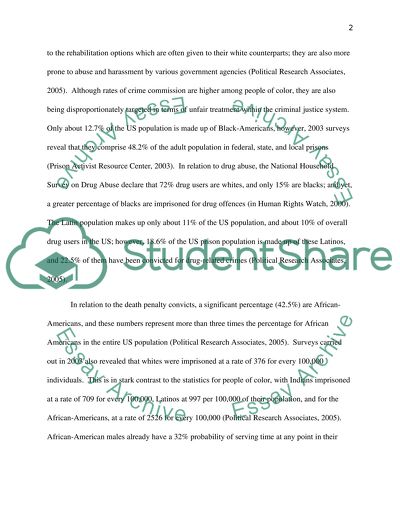Cite this document
(“Racial Disproportionality in the United States Prison System Research Paper”, n.d.)
Retrieved from https://studentshare.org/history/1393282-racial-disproportionality-in-the-united-states
Retrieved from https://studentshare.org/history/1393282-racial-disproportionality-in-the-united-states
(Racial Disproportionality in the United States Prison System Research Paper)
https://studentshare.org/history/1393282-racial-disproportionality-in-the-united-states.
https://studentshare.org/history/1393282-racial-disproportionality-in-the-united-states.
“Racial Disproportionality in the United States Prison System Research Paper”, n.d. https://studentshare.org/history/1393282-racial-disproportionality-in-the-united-states.


